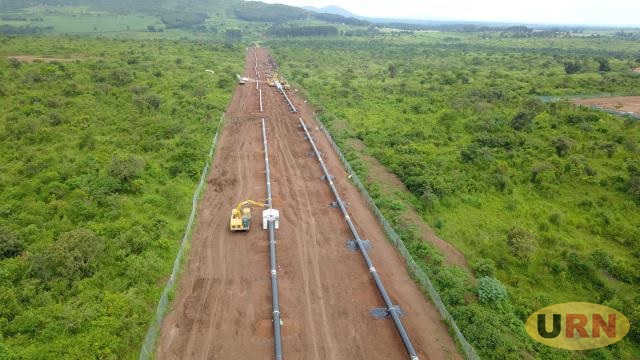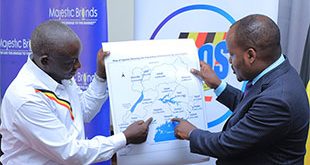
Kikuube, Uganda | THE INDEPENDENT | The contractors undertaking the construction of the 1,443-kilometer East African Crude Oil Pipeline (EACOP), designed to transport crude oil from Uganda’s Albertine region to the Chongoleani peninsula near Tanga Port in Tanzania, have laid over 100 kilometers of the pipeline across both Uganda and Tanzania.
The project is a joint venture between China Petroleum Pipeline Engineering Co. Ltd and Worley Limited. As of the latest update, the contractors have successfully laid more than 100 kilometers of the pipeline in both countries. Estimated to cost US$5 billion, the pipeline’s starting point is at Nyamasoga village in Kabaale parish, Hoima District, Uganda.
It will have a 24-inch diameter, be insulated, and electrically heated, with six pump stations (two in Uganda), two pressure reduction stations, and a marine export terminal in Tanzania. Hadi Watfa, the Manager of Above Ground Installation for the EACOP project, told Uganda Radio Network (URN) in an interview that more than 100 kilometers of the pipeline have already been covered in both Uganda and Tanzania. He highlighted the steady progress of the construction, marking a significant milestone.
Watfa also noted that the project is being executed with environmental sustainability in mind, addressing concerns raised by activists protesting its impact on the ecosystem. The pipeline route will traverse Uganda through Hoima, Kikuube, Kakumiro, Kyankwanzi, Mubende, Gomba, Sembabule, Lwengo, Kyotera, and Rakai, before crossing into Tanzania between Masaka and Bukoba, continuing through Kahama, Singida, Kondoa, and ending in Tanga.
The project is jointly owned by TotalEnergies E&P Uganda (62%), CNOOC Uganda (8%), Tanzania Petroleum Development Corporation (15%), and Uganda National Oil Company. However, the EACOP project has faced significant opposition from both local and international environmental and human rights activists. In 2022, the European Parliament called for a one-year delay of the project, citing concerns over human rights violations and environmental damage. The Parliament’s resolution highlighted alleged abuses, including the wrongful imprisonment of human rights defenders, arbitrary suspension of NGOs, and forced evictions of landowners without proper compensation.
The EU Parliament also raised concerns about the potential displacement of over 100,000 people due to the project. Further, it expressed alarm over the environmental impact, particularly on protected areas like the shores of Lake Albert and Murchison Falls National Park, where TotalEnergies plans to dig 132 wells. The resolution called for a halt to extractive activities in these sensitive ecosystems.
****
URN
 The Independent Uganda: You get the Truth we Pay the Price
The Independent Uganda: You get the Truth we Pay the Price



